Even before 2020, our young people experienced skyrocketing rates of anxiety, stress, trauma, and suicide. This generation of students faces the fear of school or neighborhood shootings, concern over police brutality and systemic racism, and eco-anxiety. More than any generation before them, they see, hear, and feel local and global injustices in real time through social media. They are burdened by both an expectation that they need college degrees to succeed and the soaring costs of higher education. Nearly half of teenagers surveyed recently in California reported moderate to severe mental health concerns.
Shifting Schools to Heal
The recent focus on increasing mental health experts, counselors, and socio-emotional learning is a major step forward. But, it has largely ignored the elephant in the room: where students learn.
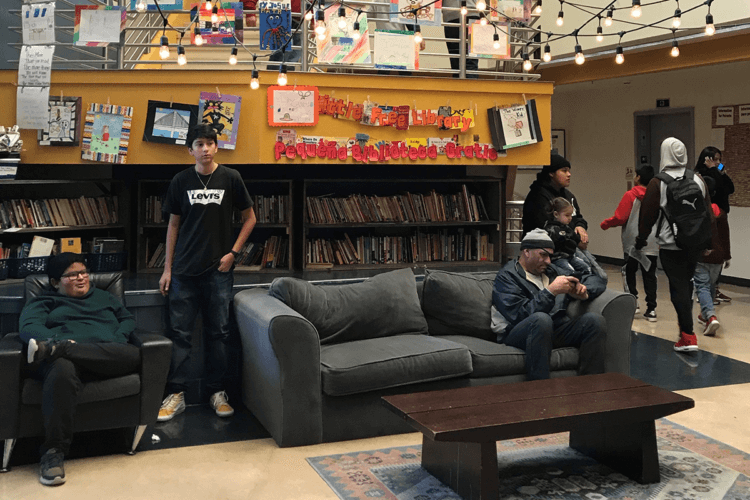
Most schools—whether in cities, suburbs, or rural areas—are set up similarly with classrooms full of fixed desks and chairs, window blinds closed, and a yard full of asphalt or sports courts. Too many schools have classrooms with no windows at all. If you’re privileged, you might have living grass and some trees on campus. Schools face communities through locked gates, security cameras, and grates over windows. They’re often closed off to community members at night and on weekends. These environments tell students, consciously or subconsciously, “You are not safe,” and tell the community, “This school is not yours.” These school campuses do little to nothing to support environmental health. Schools in low-income communities of color fare far worse physically than schools in higher-income neighborhoods.
Students need and deserve school environments that support their mental health and well-being. School design is especially important for students and teachers struggling with stress, anxiety, trauma, depression, and learning or developmental differences. These conditions make us more sensitive to noise, distraction, and other sensory qualities of our environments. School design affects how students learn, feel, and think about themselves and the world. The likelihood that children and youth struggle with the effects of trauma are so high that most school districts advocate for trauma-informed education.
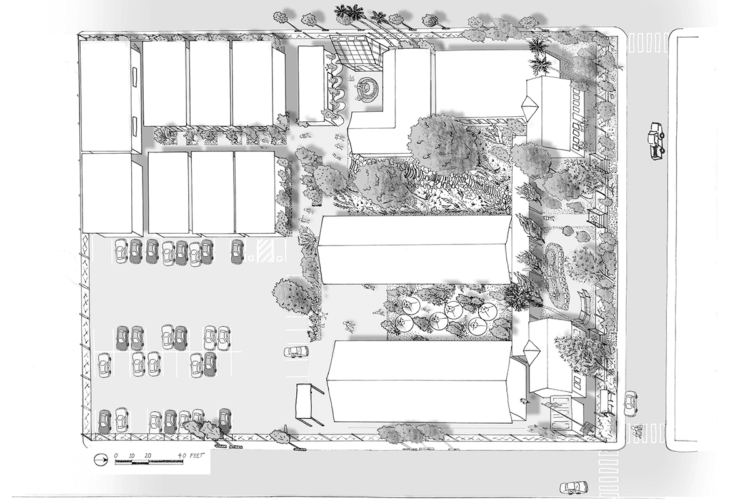
So many of us take for granted the physical nature of schools. As educators, we aren’t taught to question the classroom walls, windows, and world just outside. Schools and neighborhoods can be designed to reduce anxiety, reduce stress, provide a strong sense of belonging, reduce crime, and bring communities together. Their design and function can reflect and represent the students and communities they serve. The physical layout and material qualities of classrooms and schoolyards can reduce bullying, reduce student crime and disorderly conduct, and increase the likelihood that students will choose to go to four-year college. Outdoor classrooms, gardens, and living laboratories where students can learn by doing give struggling students a place where they can thrive academically—and shift teachers’ and their own perceptions of their ability to learn. Something as simple as looking at trees through a window can improve our body’s ability to heal. And the same strategies that can achieve all those things can also promote environmental literacy.
School Strategies for Student Support
After years of visiting and designing California school grounds, I became convinced that we had to do better than the hardened and sparse environments where our students spend most of their time. My own children’s challenges with mental health and learning made this a personal and professional mission. Over the last five years, I’ve found specific design strategies to support students’ mental health and well-being. Below are a few ideas to transform a classroom or a campus on any budget or timeframe. The strategies are organized into three themes that support students at school: nurture a sense of belonging, provide nature-filled environments, and inspire awe.
1. Nurture a Sense of Belonging
- Engage students and teachers in school planning and design: Asking students and teachers what they want and need at school is both rare and transformative. It shows them that they matter. Students and teachers know what they need. We always learn something new about our school community when they are actively engaged in school change.
- Honor students’ lived experiences and abilities: Recognize and reflect students’ unique and diverse identities and developmental and learning strengths and differences through art and places to learn through exploration. Practice cultural competency and universal design approaches to create inclusive learning environments.
- Create calming, quiet places and cozy spaces: Make a corner of your classroom or a series of indoor and outdoor pockets into “safe spaces” with carpet, an easy chair or bean bags, or small garden rooms. Encourage students to seek them out when they need to be alone or sit with a friend or mentor.
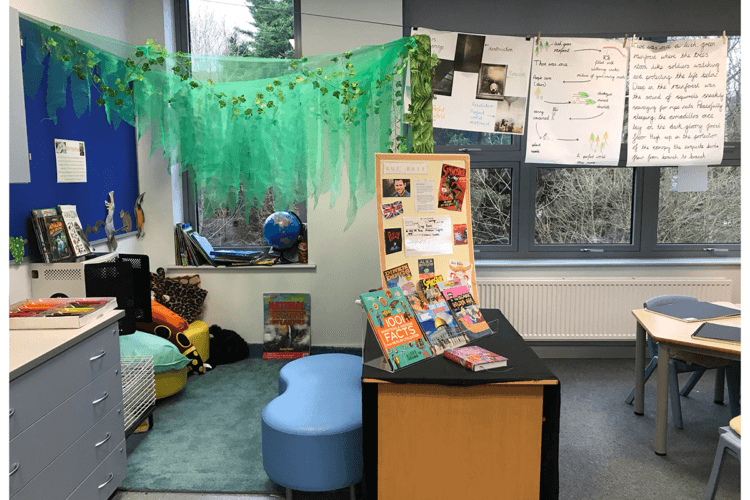
- Include places to sit, rest, swing, rock, and walk: Remember that scarcity encourages hierarchy. Provide ample seating around campus. Rocking, swinging, and walking calms us at all ages. Make places where students (and teachers) can engage in soothing activity and train schoolyard monitors to allow them to.
2. Provide Nature-Filled Environments
- Design to welcome other species: For students experiencing stress, anxiety, and depression, connecting with and caring for an animal or plant can bring healing and calm. Welcoming other species can mean bringing furry friends to school or it can mean revealing natural systems on campus by restoring native ecosystems or creating habitat gardens to invite birds, butterflies, and other beneficial beings onto campus.
- Uncover windows in classrooms, corridors, cafeterias, and common areas: Teachers can make a big difference in their students’ lives by clearing away as many obstacles between their classroom and the outdoors as possible. If there are covered windows at your school, start by uncovering them. Then study the views and grounds outside to find opportunities to plant trees and install gardens in the ground or in raised planters so students and teachers have views of nature.
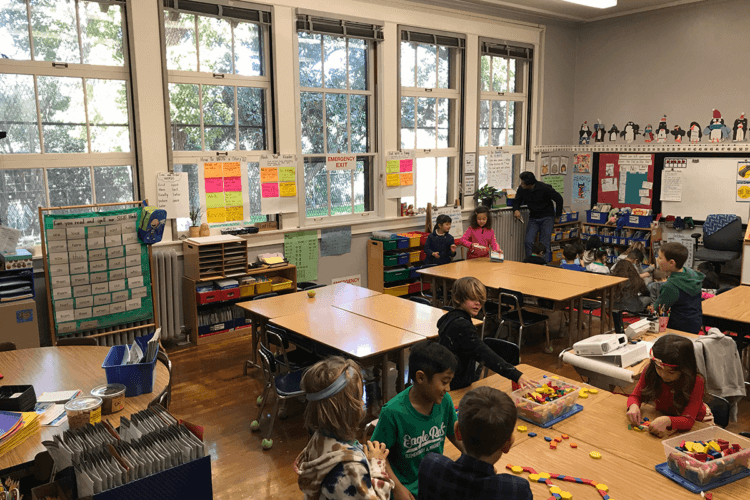
- Encourage students to play and explore freely in nature: At every age, students need a choice of places and activities to support their mental and physical health. Contrary to common practice and belief, elementary school students engage in more positive and healthy behaviors when there are fewer playground rules and more variety in schoolyard spaces. Middle and high school students rarely have opportunities to explore or play in natural settings at school. Breaking up large outdoor areas with trees and gardens can increase positive behavior and reduce student crime.
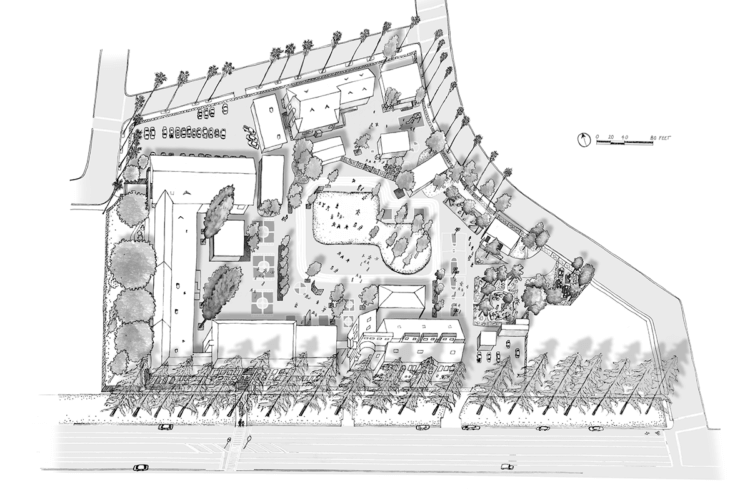
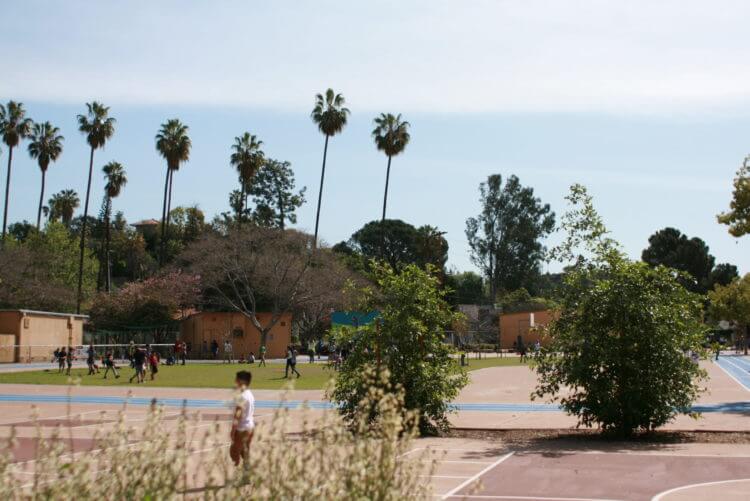
3. Design for Wonder, Beauty, and Awe
- Work with human and natural processes: Engage students and teachers in researching the natural and human histories of your school site and see if you can find small ways to reveal those histories on campus. Many schools are built on top of wetlands, buried streams, fault lines, or disappearing ecosystems. A place where asphalt keeps breaking up might be a sign of an underground stream—or a place that frequently floods. Work with your facilities team to explore whether this area could become a riverine habitat to engage students in learning and taking care of the natural world.
Over the next three years, we have an opportunity to invest funds from the American Rescue Plan into creating healthy, inclusive, and equitable learning environments for Title I schools. We can do so much to transform the elephant in the room—outdated, single-purpose, industrialized learning environments—into nurturing, nature-filled, and inspiring schools. Our children and teenagers need and deserve schools that help heal them, their communities, and their relationship to the environment.


One Response
I am looking for qualified and forward-thinking input for the student health area(s) as the school district that I work at as the district nurse is in the early stages of yet another push for a bond to replace our aged, unsafe high school. Your article was near the top of a search for “architectural design for school nurse room” and I’m thankful, as it is just the spirit of what I want to communicate to our Facilities Advisory Committee along with the nuts and bolts of function, layout, etc.
I will read and likely recommend your book to the committee and our school board and administrators.
Can you supply to me a few referrals for consulting groups that can bring this framework to our small city (12K citizens, 1200 students, 3 schools, 1 school district) along with the marketing/promotional expertise to help us choose our timing, planning and execution to help our retirement (and very slightly left of center) community see the virtue and benefit in taking the best care of our youth? Please use my email to respond, if you will. Thank you!